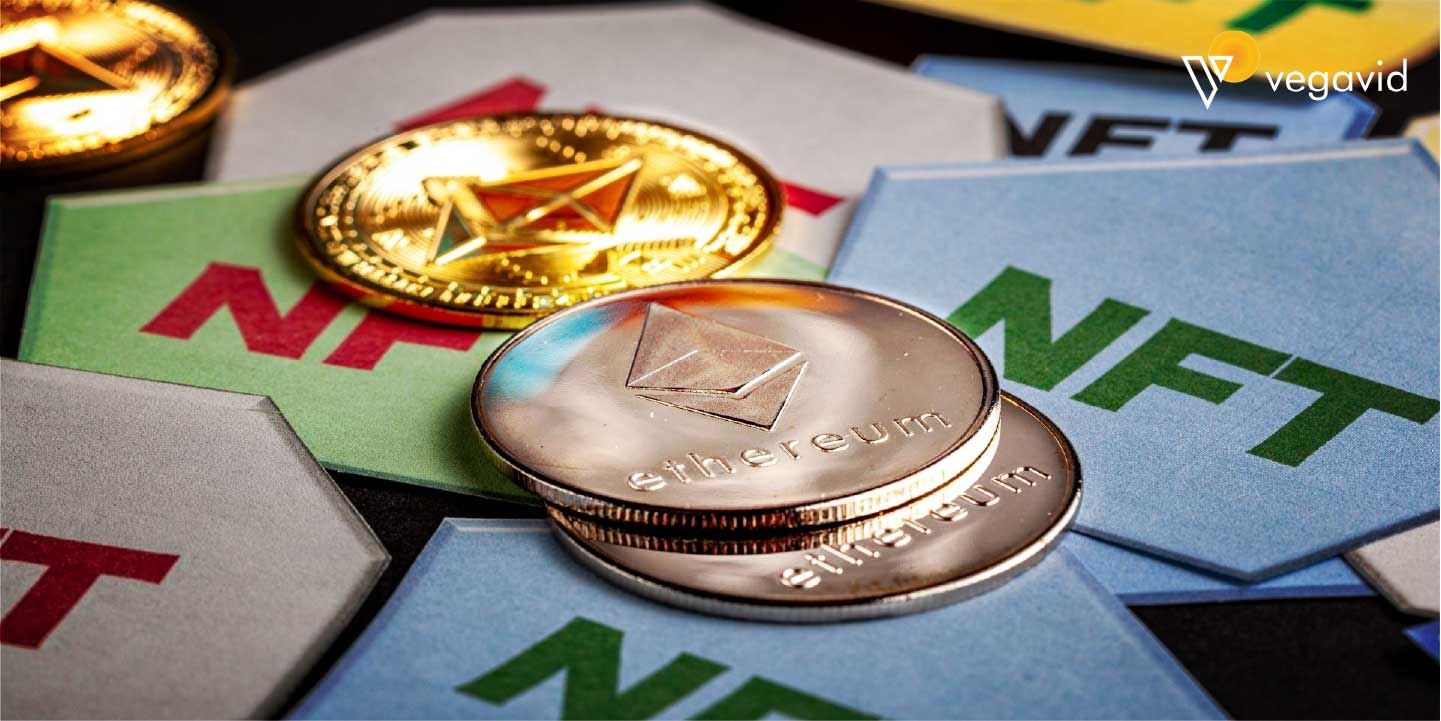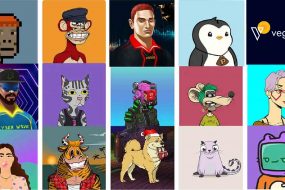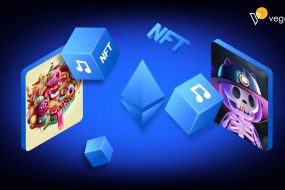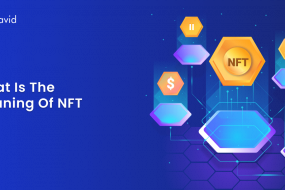
Non-fungible tokens, or NFTs, have taken the digital art world by storm in recent years. These unique blockchain-based assets allow content creators to verify ownership and reap rewards from their work. In the rapidly expanding digital landscape, Non-Fungible Tokens (NFTs) have emerged as revolutionary assets, reshaping the art, entertainment, and collectibles markets. Mint An NFT represents a pivotal step in this dynamic realm, offering creators and collectors a gateway to a decentralized marketplace where digital assets gain uniqueness and value through blockchain technology.
This step-by-step guide aims to demystify the process of minting your first NFT, empowering individuals to navigate the intricacies of this innovative space. Understanding the fundamentals is critical: NFTs, built on blockchain technology, provide immutable proof of ownership and authenticity for digital creations. Choosing the right content for your NFT, whether digital art, music, videos, or other forms of digital media, sets the stage for your foray into the world of tokenized assets.
Definition Of NFTs And Their Unique Properties
An NFT is a unit of data stored on a blockchain that certifies a digital asset as unique and, therefore, not interchangeable. They utilize blockchain technology’s inherent scarcity and verifiability to represent real-world objects like artwork, audio files, and physical support.
Each NFT contains unique identifying metadata indicating its proof of ownership and transaction history. A non-fungible token (NFT) is a cryptographic token stored on the blockchain that uniquely represents ownership of virtual items and certifies their authenticity. They are “non-fungible,” meaning each is a unique digital asset that is not interchangeable.
NFTs contain unique identifying metadata that distinguishes them from others and establishes proof of ownership. This acts as a public digital certificate proving an NFT corresponds to a specific digital artwork, collectible, or real-world asset. NFTs use blockchain’s ability to verify transactions to represent provable scarcity and provenance online transparently. Smart contracts enable unique properties and programmable conditions for digital items minted as NFTs.
Significance of NFTs In The Digital Art World
NFTs have enabled a paradigm shift where digital items can be certified as genuine, singular articles. This allows artists to sell limited editions and receive built-in royalties on re-sales. It also fosters vibrant new communities around shared projects, profiles, and marketplaces. As a new medium evolves, involvement from passionate builders will shape emerging norms and opportunities.
NFTs have enabled content creators like digital artists, musicians, and collectors to authenticate and receive proper compensation for rare creative works reliably. In a digital world where copies of files are limitless, NFTs provide a means to establish scarcity and provenance for original artworks and collectibles. By attaching cryptographic tokens to digital files using blockchain technology, NFTs certify the verified owner and allow markets to form around these uniquely identified assets.
For artists whose livelihoods stem from limited edition pieces or commissioned works, NFTs empower new opportunities by connecting a global community and facilitating built-in royalties on subsequent sales. As a new medium emerges, passionate builders will shape industry norms and opportunities. Overall, NFTs have significantly disrupted notions of ownership within digital creative realms.
Explaining Blockchain, Smart Contracts, And Their Role In NFTs
Blockchains are distributed digital ledgers that maintain a permanent record of transactions in a verifiable way without central record keeping. Smart contracts enable unique programming around NFT transactions like royalties on re-sales. They form the technological bases enabling NFT marketplaces, profiling, and digital certification. Proper understanding is vital before transacting on platforms backed by various blockchain networks.
Blockchain is a decentralized, distributed ledger that maintains a permanent and publicly verifiable record of digital transactions without centralized record-keeping. Information stored on a blockchain exists as a shared database validated by the consensus of its decentralized network of multiple participants. This makes blockchains resistant to falsification. Smart contracts are programs stored on blockchains that automatically execute transaction conditions, such as copying an artist’s address into subsequent resale transactions.
When combined with NFTs, blockchains and smart contracts form the core technological infrastructure, enabling unique digital certificates of authenticity and ownership for virtual assets. They establish unforgeable provenance, automate contractual elements, and facilitate new types of digital marketplaces and economies around creative works and collectibles.
Tips For Creating Digital Art Or Preparing Existing Content For NFT Purposes
Creators can leverage existing skills or experiment with new mediums. Popular content types include profile pictures, animation loops, whole pieces, and collections. Crisp vector or raster files around 500KB-5MB capture detail without lagging buyer interactions. Consider conceptual themes that foster interest and community.
Unique attributes may include metadata, hidden content, or evolving revisions. Creators can leverage diverse skills and techniques when preparing artworks or content for potential minting as NFTs. Popular types include profile pictures, animation loops, whole pieces, and collectible series—file sizes between 500KB-5MB strike a balance of detail and smooth interactions. Unique attributes like hidden content, metadata updates over time, and conceptual themes may foster enduring interest and community engagement.
Consideration of file format, visual components, and potential longevity will optimize pieces suited for the evolving NFT marketplace. Experimenting across mediums and properly documenting digital provenance are worthwhile practices. Emerging NFT platforms welcome innovative, connected content.
Steps to Mint Your NFT
Are you ready to create and share your first non-fungible token (NFT)? This section will walk you through the basic process of minting an NFT from start to finish. By following these steps, you’ll soon have your unique creation available for the world to see on the blockchain.
Selecting the Right Platform
Major marketplaces have varying creation processes and fees. Research features, supported blockchains, trading volumes, and fee structures to identify the best fit considering goals. Proper wallet connectivity is also vital for successful transactions. Determining the appropriate marketplace is important when ready to mint a first NFT.
Major platforms each have distinct communities, fee structures, and available payment options. Researching transaction volumes, supported blockchains like Ethereum, and verification requirements helps identify the most suitable destination. Existing platform engagement and goals for an initial drop will guide choosing between targeted artist storefronts or broader auction arenas.
Comparison of platform fees, requirements, and features
Leading marketplaces have various options, from profile-based stores to generic listing marketplaces and intermediary platforms. Factors like average sales prices, community size, and platform control determine appropriate choices for specific strategies. Always review usage terms carefully. Leading NFT marketplaces each offer slightly varied experiences for both buyers and sellers.
Factors like average sale prices, supported blockchains, level of social integrations, and platform control influence which may best match an artist or collector’s strategies. Understanding any usage restrictions or limitations facilitates compliance while comparing transaction commissions or royalty options reveals optimal alignment of costs and long-term potential.
Uploading and minting your artwork or content
Creators provide wallets, register accounts, and upload media files alongside helpful descriptions, tags, and properties. One-click functions generate the unique cryptographic token on the target blockchain, certifying the asset and its scarce token ID. With registration and wallet properly configured, creators upload finished media content with helpful descriptions, properties, and tags. Clicking to “mint” generates a cryptographic token that will live as a singular, non-fungible asset upon the target blockchain, officially certifying the work and initiating its provenance as a rare, sellable digital creative piece.
Setting royalties, pricing, and metadata
When minting an NFT, various configurations can be customized to suit the artist’s goals. Royalty percentages direct portions of future resale amounts back to the creator. Pricing choices range from fixed dollar amounts to open auctions. Impactful metadata like titles, descriptions, extra images, and attributes increase visibility and value. Taking time to craft these elements thoughtfully improves the monetization potential for pieces.
Customizable elements may include:
- Primary/background colors.
- Visible/hidden properties.
- Unlockable content.
- Dynamic metadata updates.
- Ongoing royalties on secondary sales.
Prices are listed fully or via auction functionality, depending on the platform.
Ensuring Security and Authenticity
Paying gas fees completes the transaction, after which the NFT is permanently recorded on the blockchain and visible/transferrable via the creator’s marketplace profile or other interfaces. Proper wallet security amid growing traffic is, therefore, essential. Proper wallet safeguards and platform authentication processes protect buyers and sellers.
Securing private keys and enabling additional identity verification where offered are prudent steps. The non-duplicable nature of blockchain certificates also assures original works are not at risk of forgery or duplication once minted and recorded. By maintaining a presence in the chosen marketplace, creators reinforce their status as authentic representatives for valuable digital collectibles.
Marketing and Selling Your NFT
Sharing across social profiles, communities, and sales channels increases the chances of discovery. Ongoing engagement and updates sustain interest over time. As valuable collector’s items, successful NFTs combine scarcity, storytelling, and platform-specific strategies. To find an audience, promoting new NFT listings across profiles and groups fosters discovery.
Engaging with potential buyers by sharing inspirations and releasing details sustains interest beyond the initial drop. Communities and platforms focused on specific genres may attract ideal collectors. Ongoing interactions and unique perks like exclusive access keep NFTs in the spotlight until the right owner emerges.
The Future Of NFTs
As participation broadens, new technical innovations will continue bridging the physical and digital worlds through NFTs. Future applications span ticketing, identity, gaming, art, collectibles, and creative careers in novel ways that establish fairer creative economies. Those participating now help define emerging norms and opportunities that allow others to envision innovative use cases as adoption grows.
Now in its infancy, the NFT sector has the potential for immense growth and new applications. Future areas of innovation include integration with blockchain-based identity systems and transaction platforms. Hybrid physical/digital uses can marry NFT ownership perks to accurate world items. They are maturing technical standards. As mainstream interest increases, enterprise adoption of blockchain-verified authenticity measures could transform industries like art, ticketing, media, and gaming. Collaborative tools may foster new revenue models around intellectual property.
Developing countries without traditional art infrastructures may utilize NFTs as an economic driver. Overall, the combination of burgeoning technology and creative problem-solving spirit ensures NFTs will continue redefining industries while establishing fairer economies that empower all who craft unique digital experiences.
Conclusion
With some preparation, any creative can enter this new digital frontier. By leveraging the security of blockchain technology and tapping engaged online communities, interested individuals now hold the power to distribute and monetize their work worldwide autonomously. Those who thoughtfully add value through compelling scarcity, storytelling, and buyer-focused strategies stand to contribute meaningfully.
Overall, NFTs herald an inspiring new age valuing all who create. Mint An NFT symbolizes a transformative step into digital ownership and innovation. This step-by-step guide has illuminated the intricate yet empowering journey of converting digital creations into unique, tokenized assets. Understanding the nuances of NFTs, from their blockchain-based uniqueness to the significance of content selection, paves the way for creators and collectors alike to engage meaningfully in this burgeoning space. Exploring platforms, navigating the minting process, and implementing security measures are crucial pillars in this transformative journey.
As the NFT landscape continues to evolve, embracing the steps outlined in this guide initiates your involvement and equips you to thrive in this dynamic marketplace. It’s a realm defined by innovation, creativity, and decentralization, offering unprecedented opportunities for creators and collectors to redefine ownership, authenticity, and the value of digital assets. Seize this guide as a stepping stone toward a world where digital request knows no bounds.











